Eskay Mining (ESK.V): First of 8+ Targets Appears to be a BIG Hit
Setting The Scene
Lets first recap the October 16 news release titled “Eskay Mining Completes Productive TV-Jeff Diamond Drill Campaign in which Most Drill Holes Encountered VMS Mineralization“
(Bold/highlights added by me…)
Highlights:
- The 2020 drill program encompassed 4,335.55 m in 20 holes, 11 at TV and 9 at Jeff. The TV and Jeff targets, situated approximately 1.5 km apart, have traditionally been viewed as independent VMS systems, but data from recent Skytem, magnetotelluric and induced polarization geophysical surveys conducted by the Company show very strong evidence these prospects are likely part of a single larger VMS system, one with a footprint extending for perhaps 3-4 km from north to south. If so, this means this is potentially a much larger VMS system when compared to others in the region.
- Nearly all drill holes at both TV and Jeff encountered VMS styles of mineralization including bedded massive sulphide, stockwork feeder and/or sub-seafloor sulphide replacement (Figures 1-3). Historic drilling at these targets dates to nearly 25 years ago and did not adequately test the style and orientation of the VMS system as now interpreted. Eskay Mining’s recently completed drill holes were oriented to generate much more appropriate geologic and geometric data.
- Sulphide mineralization in all holes is hosted by a sequence of mudstones and volcaniclastic rocks. Eskay Mining speculates that this sequence of host rocks is similar to those reported by Skeena Resources in recent deep drill holes under their Eskay Creek VMS system. Skeena Resources has discovered multiple levels of mudstone and mineralization at depth at Eskay Creek.
- Late in this season’s drill program, Eskay Mining began to offset early mineralized intercepts at Jeff. Subsequent holes encountered mineralization displaying silver-bearing sulphide minerals such as pyrargyrite and a natural gold-silver alloy called electrum, a promising indication of potential for appreciable precious metals in some mineralized intercepts (Figures 4 and 5). Forthcoming assays will help evaluate this potential further.
- Interestingly, mineralized intercepts with precious metal mineralogy were encountered in holes testing the highest stratigraphic position within the mineralized sequence that was tested during this program. This suggests further mineralization may be discovered yet higher within the stratigraphy than previously thought. Therefore, Eskay Mining views the TV-Jeff system as being open along strike to the north and south, down dip to the east and up section higher in the stratigraphy. TV-Jeff is a very large VMS system with robust potential for growth.
- In addition to promising drilling at TV-Jeff, Eskay has now reviewed airborne and ground-based geophysical data that was generated over broad parts of its 526 sq km property during the summer field program. At least seven other potential VMS systems are evident in this data and will be the subject of follow up exploration during the 2021 field season.
“We are very happy with our overall meterage and numerous VMS intercepts encountered in our 2020 diamond drill program at TV-Jeff,” commented Dr. Quinton Hennigh, director and technical advisor to Eskay Mining. “To pull off this much drilling this late in the season is a testament to the very strong team we have in place here at Eskay Mining. We see a very large VMS system at TV-Jeff, and the presence of visible pyrargyrite and electrum in some of our latest holes is a very promising indication the system may bear appreciable precious metals. We can now readily see many immediate areas where we need to expand drilling next season. Our geophysics indicates TV-Jeff is much bigger than previously thought, and importantly, there are at least seven other high priority VMS targets emerging across the property. We have all the reason in the world to expect a very busy follow up season next year. In the meantime, we eagerly await assays from the 2020 drill program.”
Before I go any further please keep in mind that I am a) Not a geologist, b) Have a very big position in Eskay Mining and c) Have Eskay Mining as a banner sponsor. Thus I might be biased and/or wrong!
Quinton Hennigh commenting on the news on October 16 (same day as the NR):
(Must listen)
My Thoughts…
1. Size
The firs thing that stood out is that Eskay’s team see “strong evidence” that the TV and Jeff zone are not two distinct VMS systems but parts of what might be a single, very large, precious metal rich VMS system that perhaps stretches between these historic prospects and beyond:
If it is indeed a single VMS system that is 3-4 km in length then it would be a around 3-4 times as long as the original Eskay Creek VMS deposit:
… This might obviously be a very big deal because that could mean that TV/Jeff is much large than the original world class Eskay Creek deposit. With that said, we do not know what the grades might be.
2. Strata
People who have watched previous presentation by Quinton, like the one with Red Cloud, will know that the mineralization in the original Eskay Creek deposit was “split” in some areas. Basically the thought was that basaltic flows got injected in the “contact mudstone” which hosted the mineralization and “split” it:
(Drawings added by me)
Furthermore it was believed that Rhyolite formed the bottom floor (or “basement”) and that no VMS mineralization was expected to be present below it. However, Skeena Resources has hit mineralized mudstone horizons that are located much deeper than the “contact mudstone”:
If the slide above was too messy I will present a simplified one:
So basically it seems that the Eskay Creek mineralization was NOT only split up by basalts in the original deposit but it also appears to be at least TWO additional horizons with mineralized mudstones beneath it. In Crescat Capital’s latest video, where Quinton talked about the latest NR from Eskay Mining, he stated that the team now believes that BOTH the Basalt AND the Rhyolite were “injected”. In other words, everything Skeena Resources is finding in different layers beneath the original Eskay Creek deposit might have been a SINGLE VMS deposit if not for the Rhyolite. If that was’t enough Quinton stated that Eskay Mining did NOT encounter any Rhyolite when they drilled the TV/Jeff zone over a 1.5 km stretch. This then opens up the possibility that TV/Jeff might be one very large (X times longer than Eskay Creek) VMS system that has NOT been split up in the way that the Eskay Creek system seems to have been:
Another way to visualize it using a slide form Skeena Resources:
This would obviously be huge since it would mean that the TV/Jeff system could be a much more “concentrated” VMS system. In other words this could mean that TV/Jeff might not only be 3-4 times as long as the original Eskay Creek deposit but also that the (potential) ore would be more concentrated and not be vertically split in the same way as Eskay Creek. This obviously would be great from a mining stand point since you want thick zones of coherent mineralization. You could certainly hear Quinton’s excitement regarding all this in the video.
3. Mineralization
The NR stated:
“Nearly all drill holes at both TV and Jeff encountered VMS styles of mineralization including bedded massive sulphide, stockwork feeder and/or sub-seafloor sulphide replacement”
This sounds like Eskay Mining hit all types of mineralization styles that Skeena Resources has discovered over at Eskay Creek. The “bedded massive sulphide” is probably high up in the system, “stockwork feeder” is obviously lower down and “sub-seafloor sulphide replacement” is deeper still. If you want to learn more about what a VMS system is I urge you to read my introduction piece on Eskay Mining.
Furthermore the NR stated:
“Subsequent holes encountered mineralization displaying silver-bearing sulphide minerals such as pyrargyrite and a natural gold-silver alloy called electrum, a promising indication of potential for appreciable precious metals in some mineralized intercepts”
… When Quinton talks about the intercepts with OBSERVABLE precious metal content he also states that it is from the “stockwork feeder” part of a VMS system and that the intercepts that displayed this kind of observable precious metal mineralization came as they drilled higher and higher up in the system…
Quinton then said:
“Where is the prize? Well, it could be slightly further up the hill…”
Think about this for a minute…
The original Eskay Creek deposit was found in the “contact mudstones”. The contact mudstones made up the highest level mudstone sequence in the stratigraphy and Eskay Creek was the richest VMS system that has ever been mined in terms of precious metal content. Now Eskay Mining is getting observable precious metal content in the core as they drill higher and higher up in the TV/Jeff VMS system… I don’t know about you but that sure sounds like something one would expect in an Eskay Creek type VMS system… Higher precious metal grades the higher you go in the system. The prize would then be the “mushroom cap” at the very top of the system that hopefully will contain some big tonnage of precious metals rich mineralization.
From the NR: “Example of pyrargyrite, red, encountered in a mineralized intercept at Jeff”:
From the NR: “Close-up of pyrargyrite, red, and electrum, light yellow, encountered in a mineralized intercept at Jeff. An unknown silver mineral, gray, is also present”:
You can look at more drill core pictures from the news release by clicking HERE.
To sum up:
As Eskay Mining went farther up the hill with the drill rig in an area they also began to hit the system higher and higher up. As they did this they started to see observable precious metal mineralization (possibly very high grade) in the “stockwork feeder” zone and the million dollar question is what they might find when they reach the top of the system aka “the prize” as Quinton put it:
(drawings by me. Purple lines = visualization of drill holes)
Note that the system is probably tilted and the schematic above is just a simple representation of where the drill holes that hit pyrargyrite and electrum intercepted the VMS system at Jeff.
4. Potential Value
The original Eskay Creek deposit could be worth around C$4 B today according to John Kaiser. All that value comes from the mineralization in the “contact mudstone” which we now know is the uppermost part of the “expanded” Eskay Creek system thanks to the discoveries made by Skeena Resources.
Skeena Resources has drilled out a lower grade resource that contains 2.6 Moz at 5.9 g/t AuEq in the Indicated category and 1.4 Moz at 3.0 g/t AuEq in the Inferred category. According to the 2019 PEA this deposit has an After-tax NPV of C$878 M at US$1,500/oz gold and US$18/oz silver. The numbers would obviously be quite a bit higher at today’s gold and silver prices.
Whereas the original Eskay Creek deposit had an insane grade of over 40 g/t Au and 2,000 g/t silver Skeena’s “remnant” resource grades 3.0-5.9 g/t AuEq.
The key point is that the original bonanza grade Eskay Creek deposit could be worth around C$4 B today from just 2-3 million tonnes of ore. The “remnants” of the same system, as has been delineated by Skeena Resources, might be worth over a billion CAD at today’s gold and silver prices. Furthermore, all this value (C$4 B + C$1 B) came from a VMS system with around 1 km of known strike…
Which begs the question: What kind of blue sky potential could exist for the TV/Jeff system given that it has been drilled over 1.5 km and geophysics suggests that it might very well be 3-4 km long at the end of the day?
… In other words the TV/Jeff system might have 3-4 times the strike of the known Eskay Creek VMS system. Even if the grade ends up being a lot lower than the original Eskay Creek deposit it could still amount to a lot of ounces given the apparent size. It is worth noting that only parts of the very first drill hole (out of 20 in total) have been assayed from TV/Jeff and one interval graded 4.11 g/t AuEq over 11.24 m… That is one helluva start and there are 20 additional holes coming! Furthermore it was noted in the same NR that “Assays from the upper mineralized interval encountered in hole TV20-35 have not yet returned” which opens up the possibility for more upside from the very first hole to boot.
All in all, we KNOW a) That there is precious metal rich mineralization in this VMS system, b) That it has been hit over 1.5 km of strike and c) That geophysics suggest it might be 3-4 km in total length.
Given that “most holes encountered VMS mineralization” and were guided by geophysics it would suggest that a) The geophysics works and b) The indicated total strike of 3-4 km looks rather likely.
Closing Thoughts
TV/Jeff looks like it might be a single, coherent and very large precious metal bearing VMS system. Perhaps 3-4 times the length of the original Eskay Creek deposit. We are now waiting for complete assays from all 20 holes and we know there is observable gold and silver in at least some of the holes. Furthermore the company now got a much better grasp in terms of orientation and this story has just become extremely exciting. If that wasn’t enough it looks like there is no Rhyolite within the TV/Jeff system which means that “the prize” might be much more concentrated and coherent compared to the Eskay Creek deposit (aka higher relative quality compared to the Eskay Creek deposit). Lastly, one should not forget that there are SEVEN other potential VMS systems that have already been identified and will be followed up on during the next field season…
In other words: TV/Jeff might be a very large precious metal rich (Eskay Creek type) VMS system but there are many more targets that will also be tested in the coming years on top of that. One example is Sib-Lulu which borders the area that Skeena Resources sounds most excited about to explore.
I would also point out the signal value of bringing in a second drill rig as late in the field season as they did. Not only that but Spearhead were recently mentioned as a high priority prospect and was expected to see two drill holes this field season. Despite this they went all in on TV/Jeff with two drill rigs. All in all, the actions done by the company lines up with TV/Jeff looking like something extraordinary.
With Skeena Resources pushing the “remnant” Eskay Creek deposit towards the PFS-stage it looks more and more likely that it will become a mine. This hikes up the implied value of anything and everything Eskay Mining finds since majors prefer district plays and more infrastructure etc will benefit everything in the area.
Eskay Mining just became the second largest position of mine and I haven’t sold a share since I believe the long term potential for the company is absolutely enormous. It’s still a high risk/high reward story but to have this kind of success on the very first target is not something I expected. Given the apparent size of the TV/Jeff system I think there is a real possibility for this first of many targets to be worth billions in the future, alone… And boy do they have a lot of targets. With that said there are as always no guarantees of success!
Bottom Line
- VMS system at TV/Jeff appears to be one very large system that might be a whopping 3-4 km in length
- The original Eskay Creek VMS deposit was around 1 km in length and should be worth over C$4 B today
- The remnant mineralization over the same 1 km of strike, which has been drilled out by Skeena Resources, has an After-tax NPV of over C$878 M today according to the 2019 PEA
- Stockwork feeder zone shows clearly visible precious metal mineralization in the form of pyrargyrite and electrum which was also present in Eskay Creek
- Eskay Mining has not encountered Rhyolite at TV/Jeff which might mean that the VMS system is more concentrated and coherent (high quality) than Eskay Creek
- The original Eskay Creek mine was a world class mine even though tonnage was low and it now appears that only the upper parts of a larger system was mined
- There are at least 7 additional targets identified, that might be stand alone VMS systems, which will be explored next field season in addition to TV/Jeff, which might include:
- SIB/Lulu
- 11.7 m of 19.5 g/t Au and 1,602.9 g/t Ag
- 109.25 m of 0.80 g/t Au and 3.6 g/t Ag
- Skeen Resource’s high priority exploration target is right next to SIB which is also directly on strike from the Eskay Creek deposit
- Eskay Mining team has re-interpreted the geology and believe they now know what previous explorers did not
- Cumberland
- VMS mineralization outcropping at surface
- “the Cumberland VMS system likely formed during the same time period and at the same stratigraphic position as Eskay Creek. “
- Tet
- 37,366 g/t Ag (chip sample)
- 23,726 g/t Ag (chip sample)
- 9,400 g/t Ag (chip sample)
- 1,400 g/t Ag (chip sample)
- … “Samples were rich in a silver mineral called tetrahedrite, a common mineral at the Eskay Creek deposit. “
- C10
- 1.5 m of 99.4 g/t Au and 28.1 g/t Ag
- “Precious metal rich core from the C10 Prospect situated between Red Lightening and Cumberland appears to contain abundant sulphate minerals including anhydrite and possibly barite in addition to sulphide minerals. This mineralogy suggests a possible “white smoker” origin”
- Spearhead
- Was planned to also be drilled this season before TV/Jeff surprised to the upside
- “Recent field examination of the Spearhead VMS prospect has defined a zone of carbonaceous mudstone and massive sulfide mineralization striking northwest, steeply overturned and outcropping over at least 150 m on the surface”
- Red Lightning
- “Like core from Cumberland, precious and base metal bearing core from the Red Lightning Prospect appears to be footwall feeder style VMS mineralization hosted by rhyolite”
- etc
- SIB/Lulu
- Upcoming catalysts:
- Assay results from 20 holes at TV/Jeff
- Property wide BLEG sample results
- Geophysics results
How big can Eskay Mining get?…
Some TA
Once we leave $1 behind us I don’t see much resistance before $1.4 and then I see $2. If we break $2 then I think all hell is going to break loose since it will be the mother of all break outs from a decades long resistance zone. Given the apparent size of the TV/Jeff system I can see us getting to $1.4 and $2 if we get a few decent holes that confirms what should be economic mineralization in a few areas within the very large footprint. At $2 Eskay Mining would have a valuation of around C$280 M which really isn’t much in the grand scheme of things. If this system has decent grades and a footprint of 3-4 km then C$280 is going to be chump change down the line. No promises as always however and this is not trading advice!
Note: This is not investment advice. I am not a geologist nor am I a mining engineer. This article is speculative and I can not guarantee 100% accuracy. Junior miners can be very volatile and risky. I have bought shares of Eskay Mining in the open market and I was able to participate in the latest private placement. I can buy or sell shares at any point in time. I was not paid by any entity to write this article but the company is a passive banner sponsor of The Hedgeless Horseman. Therefore you should assume I am biased so always do your own due diligence and make up your own mind as always.
Best regards,
Erik Wetterling aka “The Hedgeless Horseman”
Follow me on twitter: https://twitter.com/Comm_Invest
Follow me on CEO.ca: https://ceo.ca/@hhorseman
Follow me on Youtube: My channel



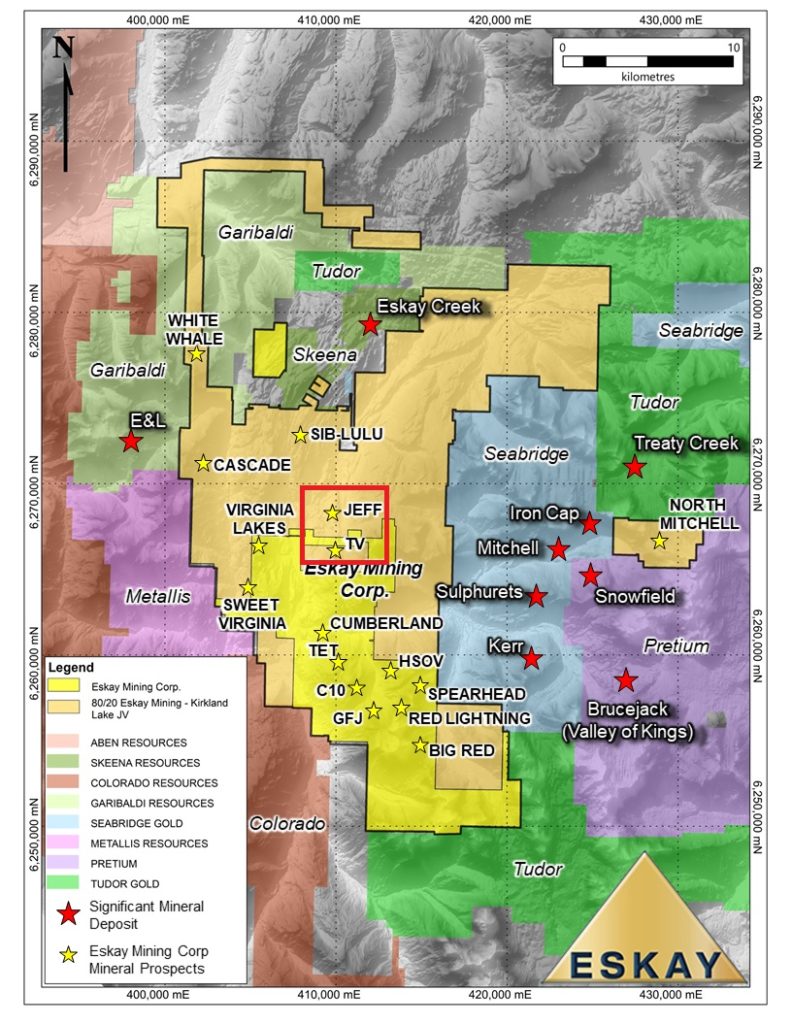
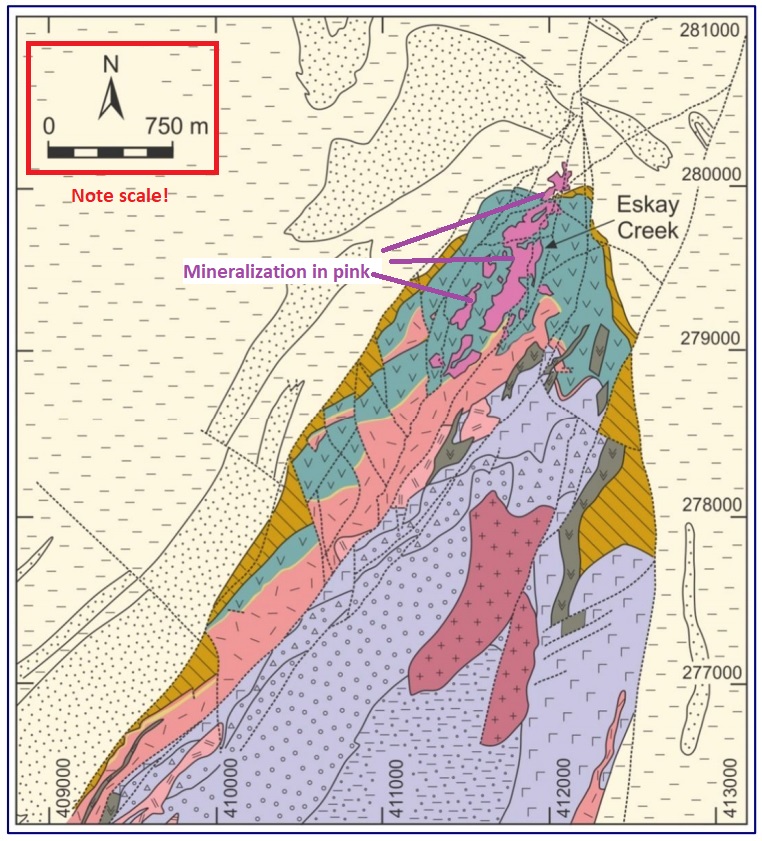
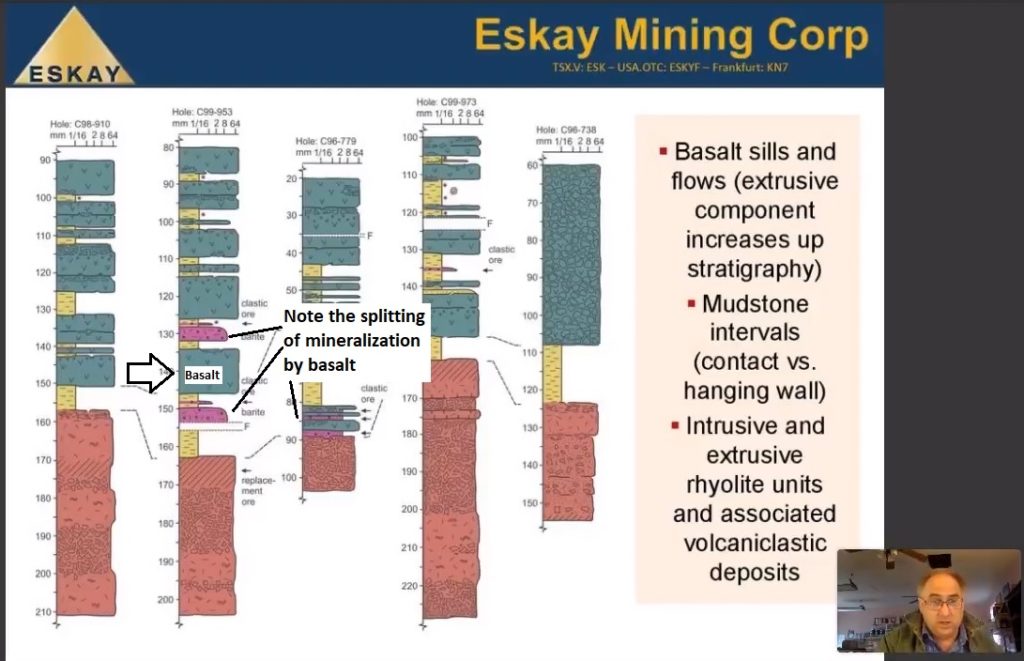
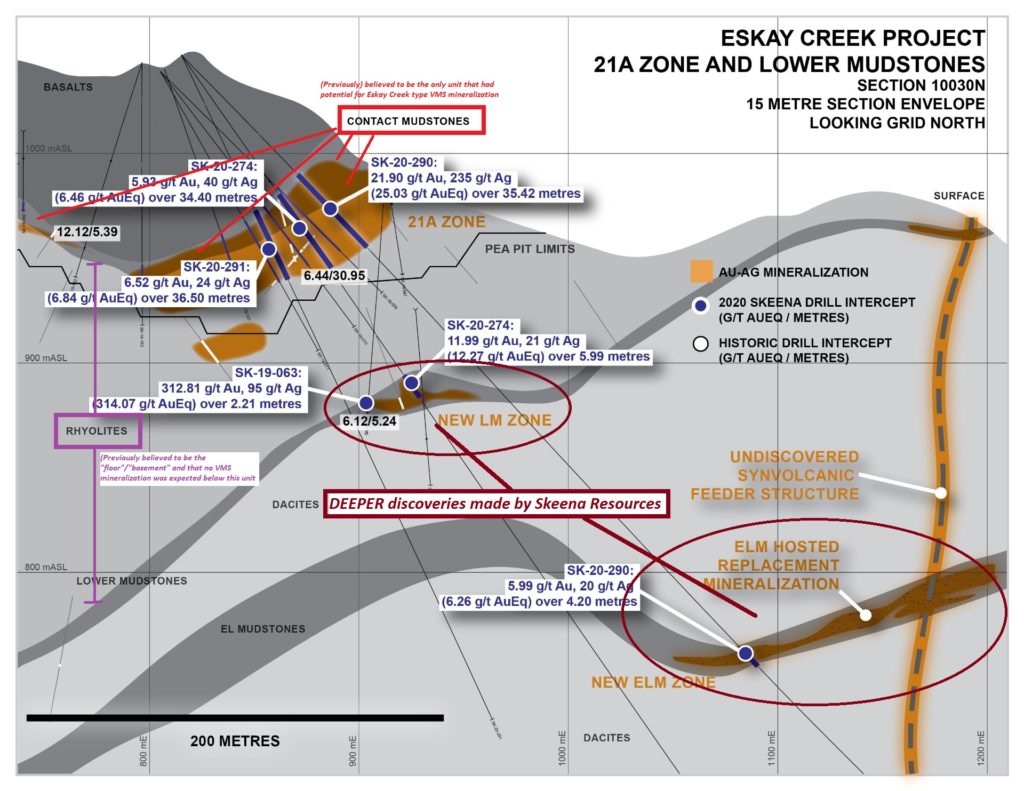
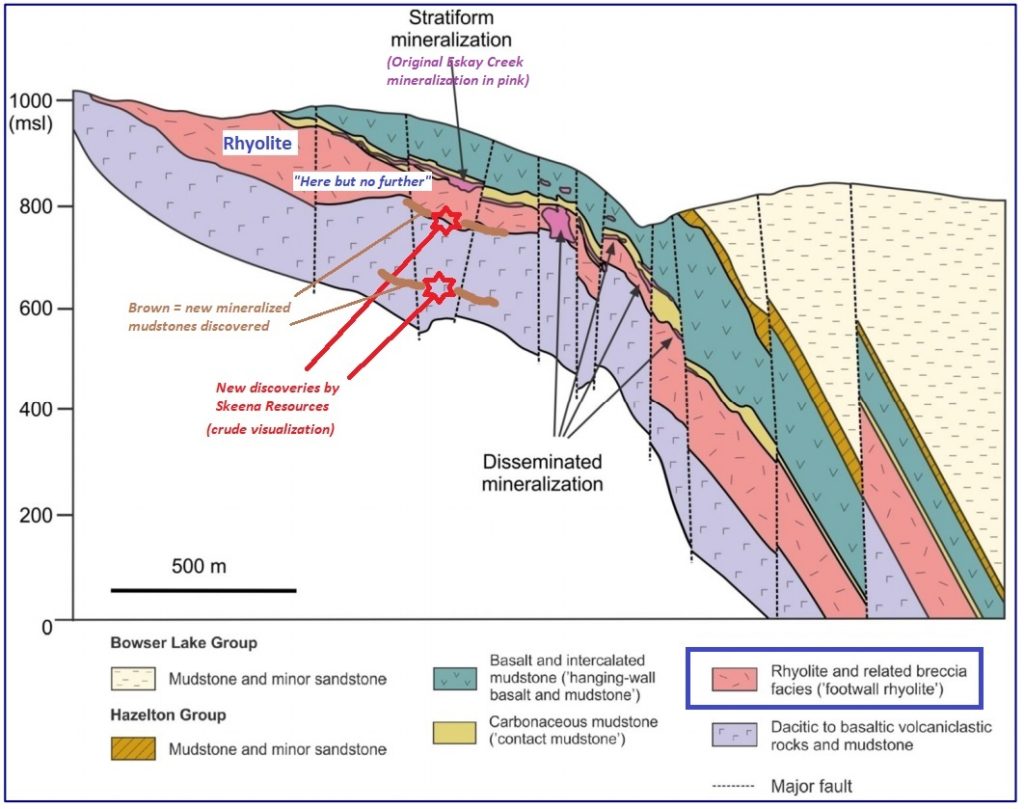
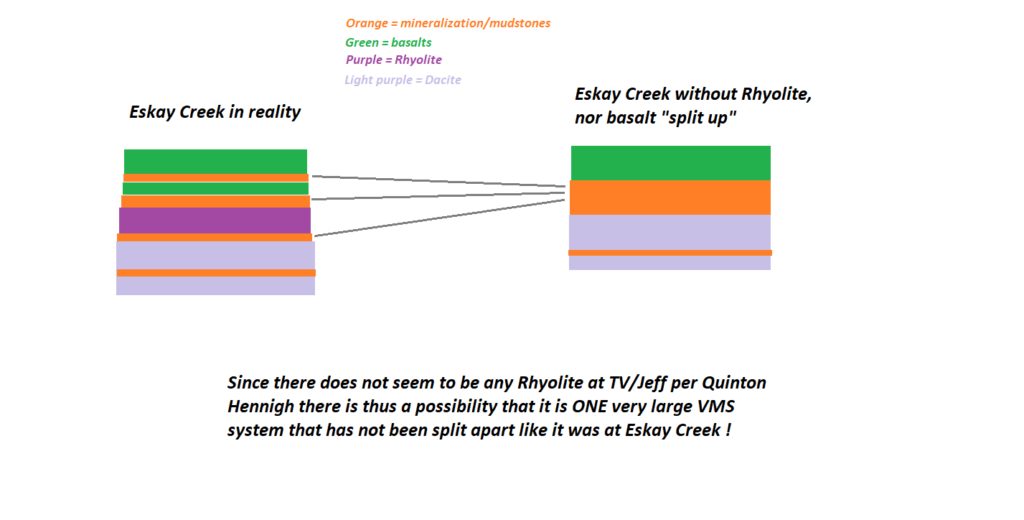
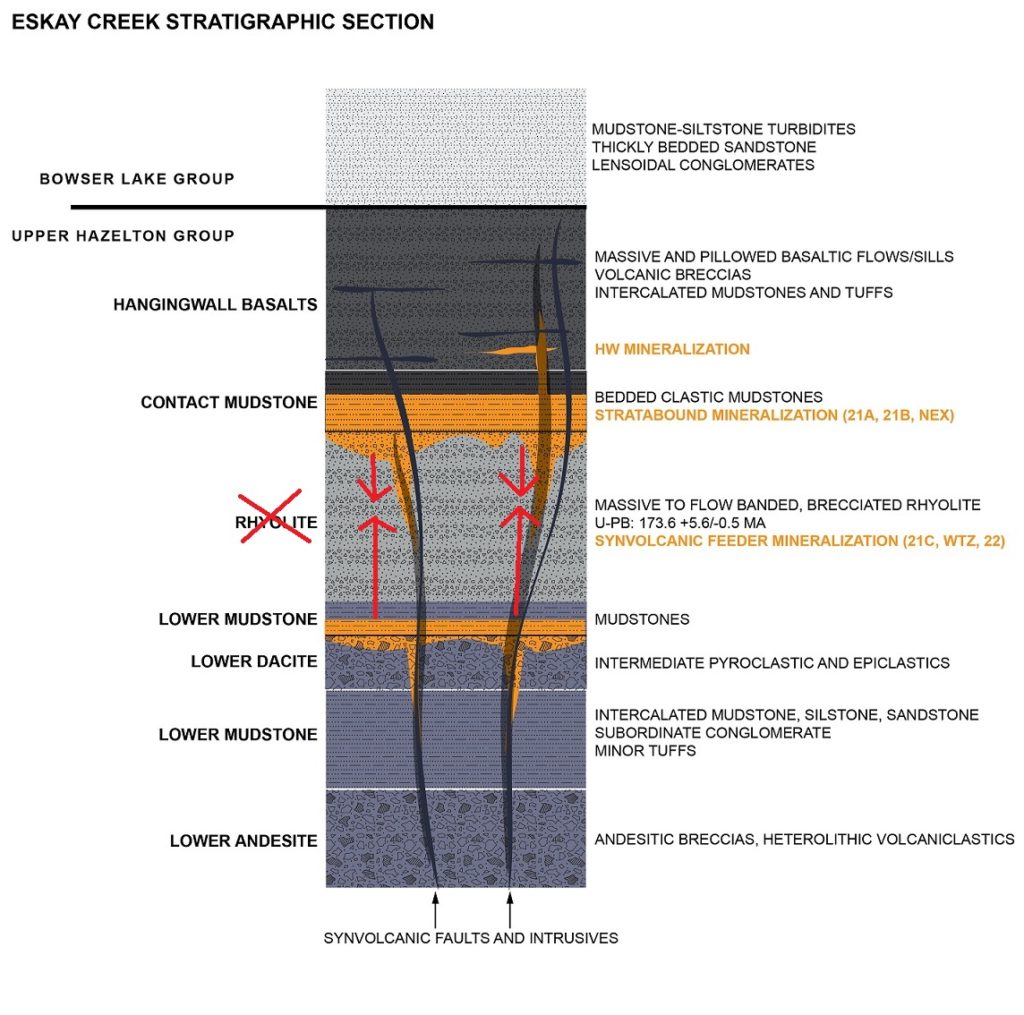
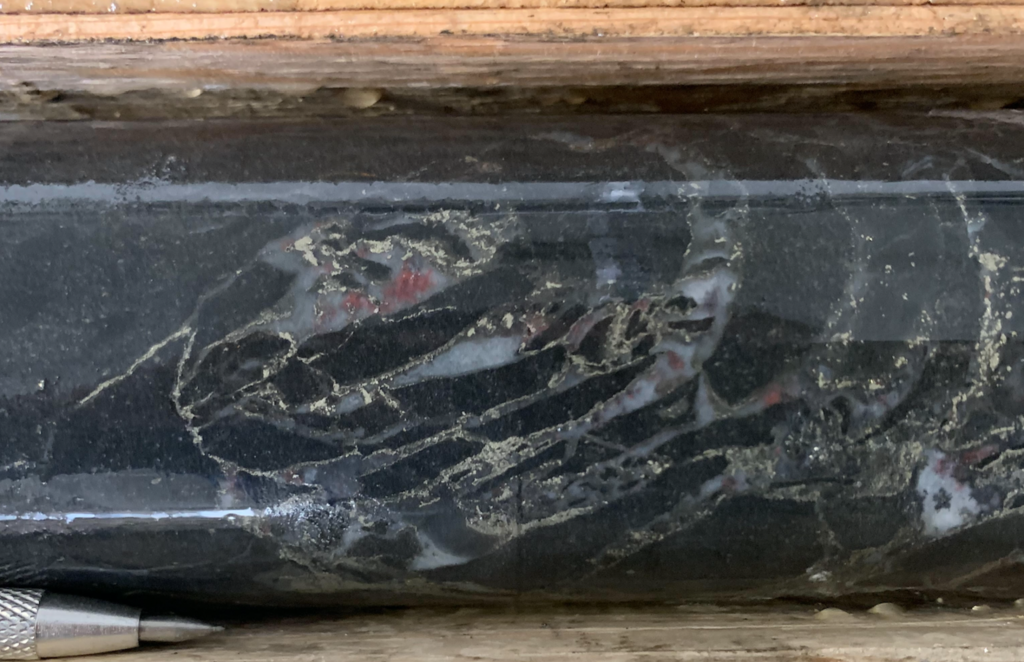
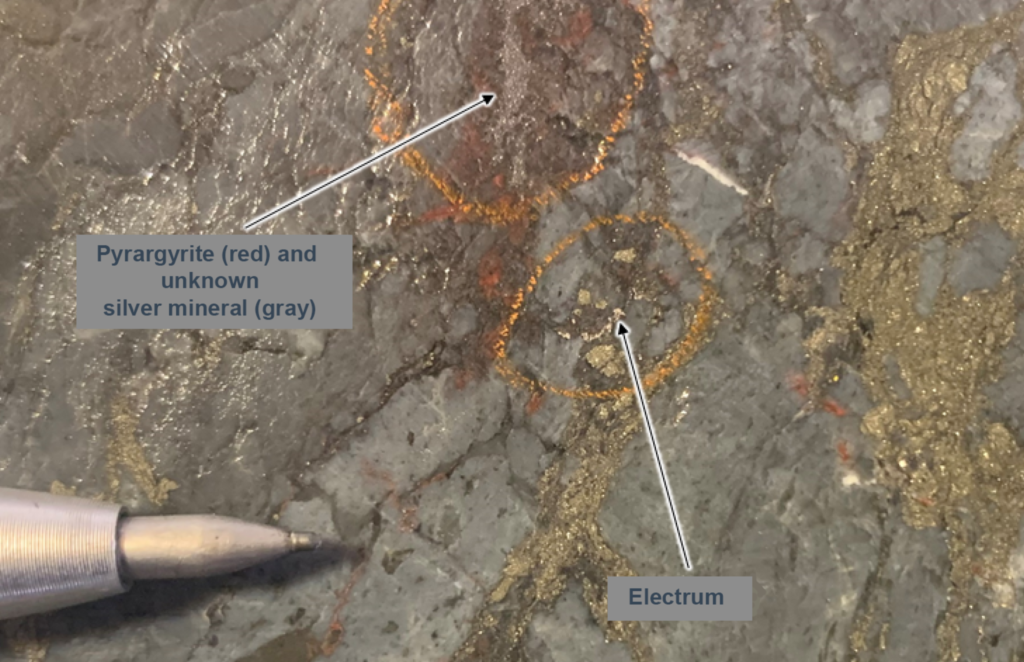
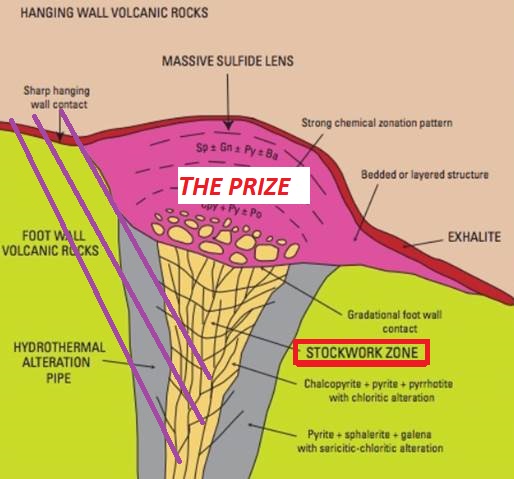
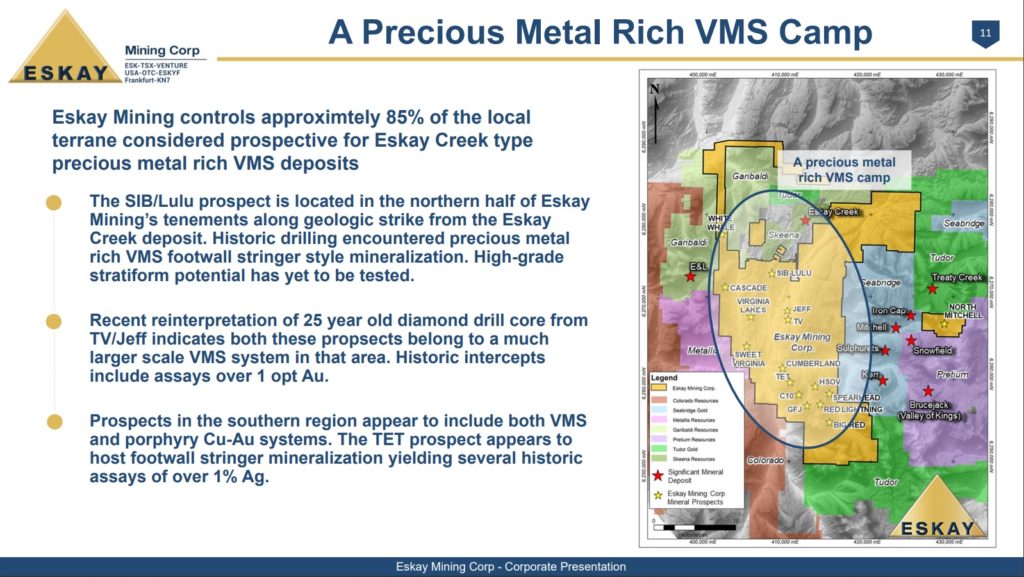
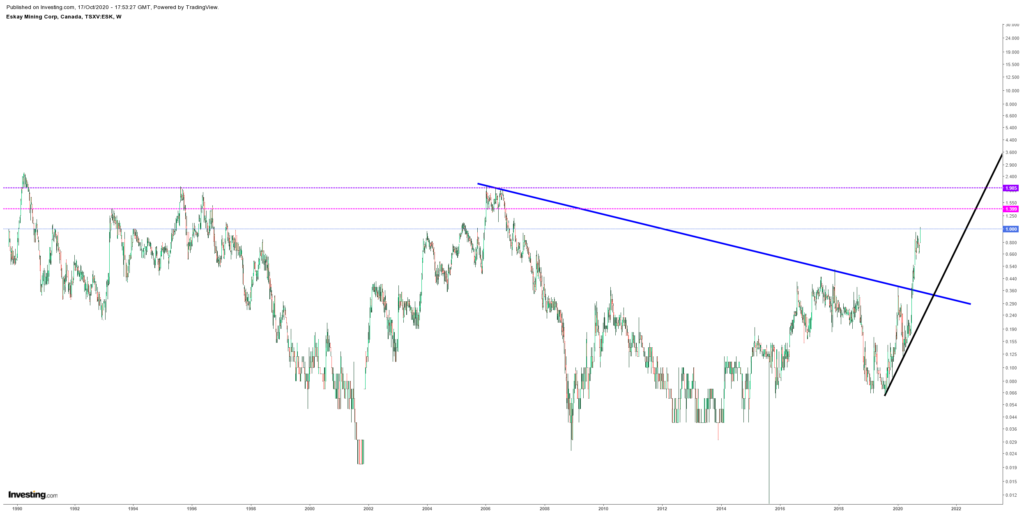



























Excellent and comprehensive report on Eskay Mining as we currently see it. Very speculative but promising.
Go Esky Go., Appreciate the information.
RK
Excellent commentary. If this is your second largest holding, what is your first? I’m guessing Novo. Wish you had a PayPal link for contributions. I would send you a few bucks. (Squeamish about using a credit card.)
Every single one of my holdings that you have recommended, has gone UP! Thank you. Of course I always do my own due diligence, but with the quality of your reporting, it is simply validation of some key points. I echo Ed’s comment and would love to pass along a contribution for such quality writing.
Up 10.7% this a.m. It appears to me your report is moving the market.
I saw your tweet on Skeena’s infill drilling. Any read through to Eskay Mining?